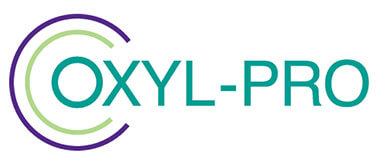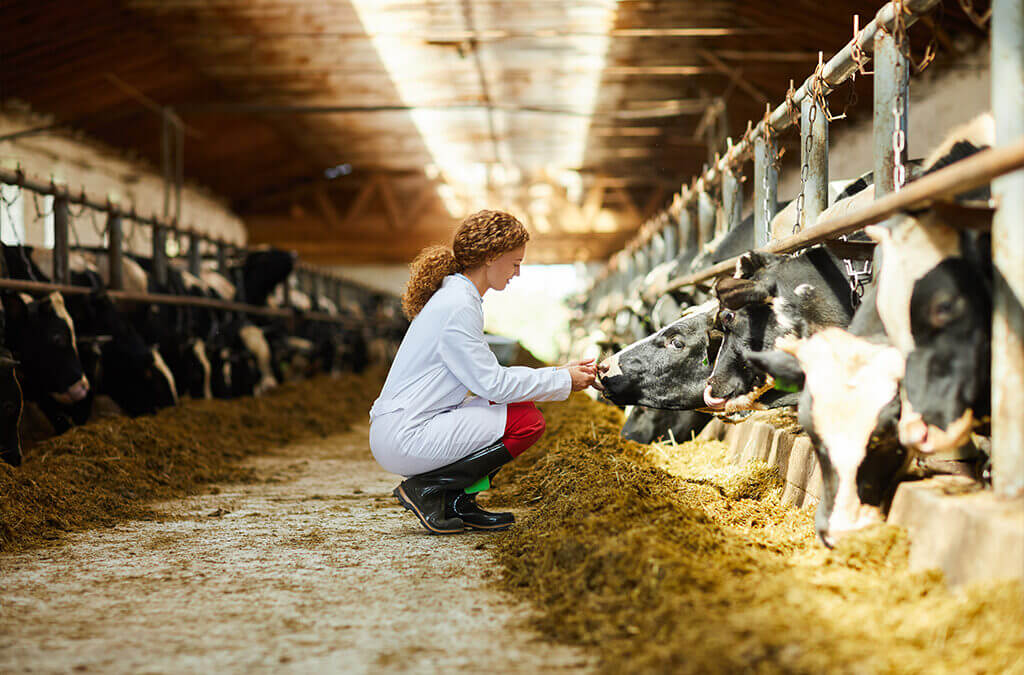Water treatment is an essential aspect of livestock farming because it helps ensure a healthy animal lifecycle, and it can affect the eventual meat yield.
There are various ways to manage agricultural water effectively, including different forms of water treatment. They are:
- UV sterilisation
- Reverse osmosis, and
- Chemical water treatments, such as Oxyl-Pro and chlorine dioxide.
UV Sterilisation
Sterilising water for livestock, using germicidal ultraviolet lamps, is a rapid water disinfection method that does not rely on heat or chemicals.
UV or ultraviolet energy exists on the electromagnetic spectrum between visible light and x-rays. It is a form of invisible, short-wave radiation.
UV energy can kill microorganisms. When ultraviolet radiation hits a cell, it penetrates its outer membrane, passes through the body and disrupts DNA to prevent reproduction.
Applying UV radiation in this way does not alter water chemically, and adds nothing to it except energy.
This energy is lethal to microorganisms, including bacteria and viruses, thereby proving an effective means of water disinfection.
There are several reasons why UV sterilisation is a good method for livestock water treatment:
- Fast
- Safe
- Cost-effective
- Easy to use
You can apply this method using specialist, low-pressure UV lamps.
While making no contact with the water, these lamps produce ultraviolet radiation at the optimal wavelength for disinfection.
They combine highly efficient performance with low energy consumption.
However, UV sterilisation cannot guarantee 100 per cent destruction of microorganisms, and there can be variables which influence how effective it is as a water treatment method.
These include water quality, and the flowrate capacity of the UV unit.
There are also limitations to the effectiveness of UV sterilisation.
The UV lamp must be kept clean, and changed when required. One that has expired, or is dirty, will render ultraviolet radiation ineffective.
Firstly, it is a point disinfectant, meaning it will kill bacteria at one point in a watering system, but cannot create residual protection downstream.
Therefore, if any bacteria escape at the point of treatment, they could attach to downstream piping and multiply from there.
Secondly, UV sterilisation does not remove the bacteria cells, but converts them into pyrogens. In theory, this can transform the cells the method kills into a food source for any surviving bacteria.
Reverse osmosis
The reverse osmosis (RO) method for water treatment involves pushing water through a semipermeable membrane to remove its impurities.
The membrane is a thin film composite (TFC), which only allows hydrogen and oxygen to pass through it.
This is a process known as cross-flow filtration. The water that comes through to the other side of the TFC is permeate, and is then suitable for use for feeding to livestock.
The remainder, which is contaminated and has been left behind, is known as concentrate.
Some RO methods allow for recycling of this unused concentrate back into the system, for further extraction of purified water, though this can be done only a finite number of times.
The benefits of reverse osmosis include:
- Removal of up to 99 per cent of total dissolved solids in water, as well as other impurities
- Energy efficiency, since the RO filtration system consumes no energy
- Cost effective
- Easy to maintain
Reverse osmosis is less rapid a method than UV sterilisation, and it does involve the ongoing expense of replacing filters regularly.
Chemical water treatments
As the name suggests, as a livestock water treatment this involves adding a decontamination agent and disinfectant to livestock water supplies.
One such treatment uses chlorine dioxide to treat the water.
Chlorine dioxide is a chemical compound. It is made up of one chlorine atom and two oxygen atoms.
It has several antimicrobial uses, including the disinfection of water.
Even in small doses, it can kill a wide range of bacteria, including e-coli, crypto and giardia.
It is also applicable to a range of water sources, such as surface water, boreholes, streams and springs.
Chlorine dioxide has been used in water treatment since the 1950s.
But in the 1970s, another chemical began providing the basis for effective livestock water treatment. This was hydrogen peroxide, widely-used as an antimicrobial agent.
The standard water treatment based on this chemical is silver-stabilised hydrogen peroxide.
Silver peroxide has certain advantages as a chemical disinfectant:
- There is no residual toxicity from application
- It is safe for both animals and humans, and
- In an applied environment, it is stable
Hydrogen peroxide is less harmful to the environment than chlorine-based products. However, silver and silver nitrates can be extremely toxic to plants and marine life.
Oxyl-Pro, the alternative to silver hydrogen peroxide
Stabilising aseptic grade hydrogen peroxide using food-safe ingredients creates a disinfecting and decontaminating agent, Oxyl-Pro.
This is an alternative to silver-stabilised hydrogen peroxide.
Oxyl-Pro uses an encapsulation process that permits only a highly-controlled method of release.
Each individual hydrogen peroxide molecule is encapsulated and, when in contact with organic substances, only the amount necessary for disinfection becomes active.
The rest of the solution remains unchanged.
This results in a stable decontamination agent and disinfectant that acts rapidly to destroy micro-organisms and biofilms.
It works effectively against:
- Viruses
- Moulds
- Yeast
- Fungi
- Bacteria, including legionella and pseudomonas
In agricultural applications, Oxyl-Pro is ideal for livestock water treatment, including continuous dosing.
Why your choice of livestock water could be critical
Poor quality drinking water can mean livestock drinking less, affecting the animals’ general health.
Invasive bacteria can also affect the overall nutrient content of the end-product.
Without a properly maintained and treated water supply, livestock are at risk from disease, a loss of condition with lower production rates as a consequence.
Effective livestock water treatment therefore is about economic as well as animal welfare.
For more information about Oxyl-Pro as an advanced, efficient and effective livestock water treatment, please complete our contact form, call us on +44 1606 851 782, or email enquiries@oxylpro.com

